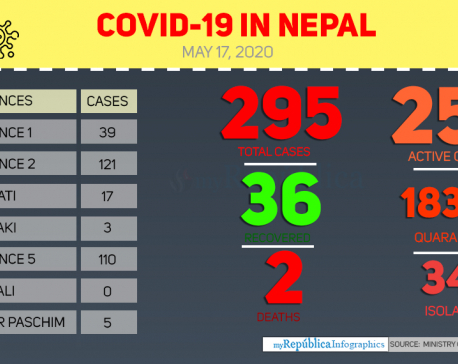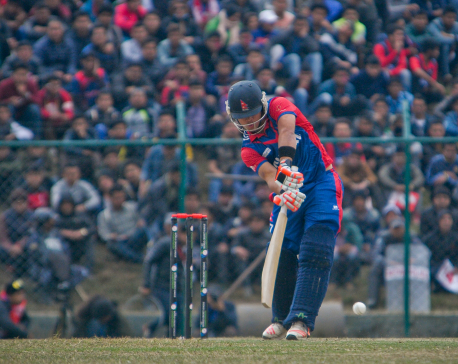
OR
Opinion
The Good Death: Should It Be Made Legal in Nepal?
Published On: September 8, 2023 09:00 AM NPT By: Diwakar Dhakal

The idea of euthanasia, set out by American philosopher Dan W. Brock, supports the idea of a good death with a dignified exit under some circumstances, such as when a patient is experiencing "irreversible and incurable suffering”. It is a venerable option for a medically impaired patient who cannot be resuscitated from elongated excruciation. It is juxtaposed with medico-legal methods for patients' good deaths as an exception. Therefore, it is legal in a handful of countries, and discussions over it in Nepal have also increased.
Methods and Consent
There are two major methods of euthanasia: 1. active (when a doctor intentionally ends the life of a patient who is suffering from an incurable or terminal illness by giving them fatal medication); and 2. passive (the act of withholding or withdrawing life-sustaining care, either at the request of the patient or when prolonging life is considered futile). Similarly, there can be three types of euthanasia on the basis of the consent given for the same: 1. voluntary (when a person who is killed has requested to be killed); 2. non-voluntary (when a person who is killed makes no request and gives no consent as the person is unable to communicate his wishes, being in a vegetative state); 3. involuntary (when the person who is killed made an express wish not to be killed). In consequence, when a person is alive but meaningless, with no dignified life, the aforesaid steps are taken for peaceful death.
Legal Provisions in Other Countries
Internationally, it is set by both medically and legally binding benchmarks, with concessions to a good death. In fact, to terminate a patient's prolonged, agonizing life and family ramifications, all parties’ wholeheartedness is required. Additionally, senility and overdependence on others slacken confidence in those people's capacity for survival, particularly when exacerbating conditions of fatal chronic diseases like cancer, Alzheimer’s, end-stage renal disease, multiple sclerosis, end-stage COPD, and extended suffering strike horrendously. As a result, to contend with the ongoing predicament, a number of nations, including Colombia, the Netherlands, Belgium, Luxembourg, Canada, New Zealand, Spain, the United States, Switzerland, Australian states, and India, have taken legal positions to legalize it, while Nepal is still in the midst of ethical dilemma.
In 1997, the Colombian constitutional court, in a historic decision (6-3 voting), established that the norm that mercy killing or euthanasia is constitutional and does not attempt to violate any constitutional principles. Similarly, Colombia’s Supreme Court voted to decriminalize assisted suicide on May 11, 2022, making it the first country in Latin America to allow medical professionals to help end the lives of their patients. In 2001, the Netherlands was the first European country to decriminalize euthanasia, including physician-assisted suicide, and in 2004, the Groningen Protocol on Euthanasia in Severely ill newborns was developed. On May 28, 2002, Belgium formally legalized euthanasia by way of the Belgian Euthanasia Act, and in 2013, it became the first country to allow euthanasia for incurably ill children after the upper house of Parliament voted by a large majority to extend to minors a 2002 law legalizing the practice for adults. Belgium is one of the two countries, along with the Netherlands, that also grants the procedure to people with mental illness. In 2008, Luxembourg became the third EU country to legalize euthanasia after the Netherlands and Belgium. The bill was passed on March 19, 2009, and it unequivocally said that doctors who carry out euthanasia and assisted suicides would not face "penal sanctions" for damages and interest.
Moreover, in 2016, medical assistance in dying (MAID) became legal for all people over 18 in Canada, and since then, more than 13,000 deaths have been reported by people who have received medically assisted deaths and have received palliative care services. Voluntary euthanasia became legal in New Zealand when the End of Life Choice Act 2019 took full effect on November 7, 2021; however, assisted suicide is illegal under Section 179 of the Crimes Act 1961. In 2021, Spain became the fourth European country to adopt an assisted dying law that permits a medically assisted death for those who are terminally ill or incurably suffering. In the United States, while active euthanasia is illegal, assisted suicide is legal in 11 jurisdictions: California, Colorado, the District of Columbia, Hawaii, Maine, Montana, New Jersey, New Mexico, Oregon, Vermont, and Washington. Since 1942, Switzerland has allowed assisted suicide – it was the first country in the world to permit any kind of assisted dying. Australian states, namely Tasmania, South Australia, West Australia, Queensland, and Victoria, have developed programs to access voluntary assisted dying, and in New South Wales, the legislation for voluntary assisted dying will come into effect on November 28, 2023. On August 1, 2022, Australia introduced a new bill in the Australian Parliament that would consider lifting the bans on doctor-assisted suicide in the Northern Territory and the Australian Capital territory, which were capsized after four terminally ill people were legally assisted in dying in 1997.
Way Forward
To aid in our domestication processes, I adopted the aforementioned international instances of euthanasia legal positions from different countries as a precedent. Meanwhile, there is a prominent proverb in Nepal that reads, "Aatma le mageko khau ra Parmatma le bholaye pachhi jaau”. It demonstrates deeply ingrained convictions that it is your duty to die when God decides you’re going to die, not a moment before. Hitherto, Nepal has no legal provisions about euthanasia that can give an overarching picture of active and passive euthanasia. The arguments and discussions are picking up steam, which is also insufficient; however, it is essential to introduce it in Nepal's expanding society in order to accustom people to its function.
For Instance, in India, while active euthanasia is illegal, passive euthanasia was legalized in 2018 by means of the withdrawal of life support for patients in a permanent vegetative state. In the case of Common Cause (a registered society) v. Union of India and Anr., the Supreme Court issued a major decision on March 9, 2018, legalizing physician-assisted suicide, often known as passive euthanasia. The court reaffirmed that the right to die with dignity was an Article 21 right to life, a fundamental right, as declared by a constitutional bench of the Supreme Court in the case of Gian Kaur v. State of Punjab. It further stated that the right to execute an advance medical directive was a step towards protecting the right to self-determination and bodily integrity. In the case of patients who were unable to take an informed position on the matter, a ‘best-interest’ position could be applied, allowing a guardian to step in and take this decision on their behalf. As a result, Nepal must take a cue from its close neighbor and make swift progress toward holistic planning from both a legal and medical standpoint, with the aim of establishing an arrangement for the legalization process.
To legalize euthanasia, it requires collective efforts from the governmental and non-governmental sectors. First, thorough education in a forward-looking society like Nepal helps to be wise about its conceptions and practices. When broad knowledge regarding incapacitating incurable diseases is entrenched, it makes the public aware and whips up debates and discussions. According to the 2021 census of aging trends and situations in Nepal, the index of aging was 23.3 in 2011, but now it has reached 36.7. It shows the alarming situation that the number of children under 15 is decreasing and the older population is increasing. Similarly, according to the WHO, diabetes affects more than 436,000 people in Nepal, and this number will rise to 1.3 million by 2030. In Nepal, where 1 in 4 people have hypertension, a total of 19,413 deaths from cancer were seen in 2018, as per reports. Also, according to an international study, Nepal has the world’s highest death rate for chronic lung disease, with more than 3,000 people dying from the condition each year. Similarly, there are other chronic illnesses, which include muscular dystrophy, Alzheimer’s and related dementia, chronic kidney disease, and numerous others, which shows the alarming situation that leaves patients in an irrecoverable state. Therefore, it is paramount to educate the public about the risks and benefits of such lifelong illnesses; whether they opt to die peacefully or not is ancillary.
Second, colossal public debates would take place when awareness levels were raised on a macroscale. When there is discussion and debate, it will provide an underlying roadmap to the concept of legalization. Third, the government could commission extensive research in regards to drafting laws on euthanasia to address all the potential concerns that can arise down the line. Thereafter, by enacting and executing laws, it can enable free, conscious, and informed decisions for irremediable individuals who are close to death or in an enduring vegetative state, clinching the right to a dignified death. Therefore, substantial education and a supportive environment for a legal and medical regulatory framework are foundational to achieving legalization in Nepal.
You May Like This

Boost investment in power transmission infrastructures
As Nepal strives to achieve uninterrupted power supply for all its citizens and capitalize on surplus electricity through exports, urgent... Read More...

Health ministry confirms three new COVID-19 cases, number of total cases reaches 295
KATHMANDU, May 17: Nepal reported three new cases of COVID-19 on Sunday evening, taking the national tally to 295. ... Read More...

Nepal vs Kenya: Five crucial things Nepal looks for second match
KATHMANDU, March 12: Nepal is taking on Kenya on Monday in the second match of the ICC World Cricket League... Read More...







Just In
- NRB to provide collateral-free loans to foreign employment seekers
- NEB to publish Grade 12 results next week
- Body handover begins; Relatives remain dissatisfied with insurance, compensation amount
- NC defers its plan to join Koshi govt
- NRB to review microfinance loan interest rate
- 134 dead in floods and landslides since onset of monsoon this year
- Mahakali Irrigation Project sees only 22 percent physical progress in 18 years
- Singapore now holds world's most powerful passport; Nepal stays at 98th












Leave A Comment